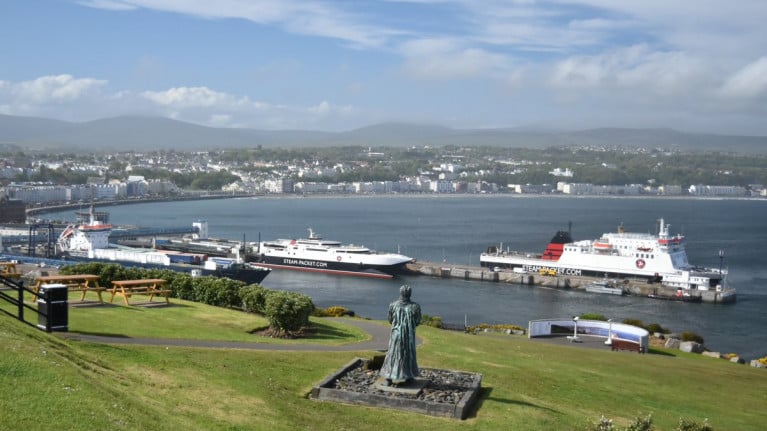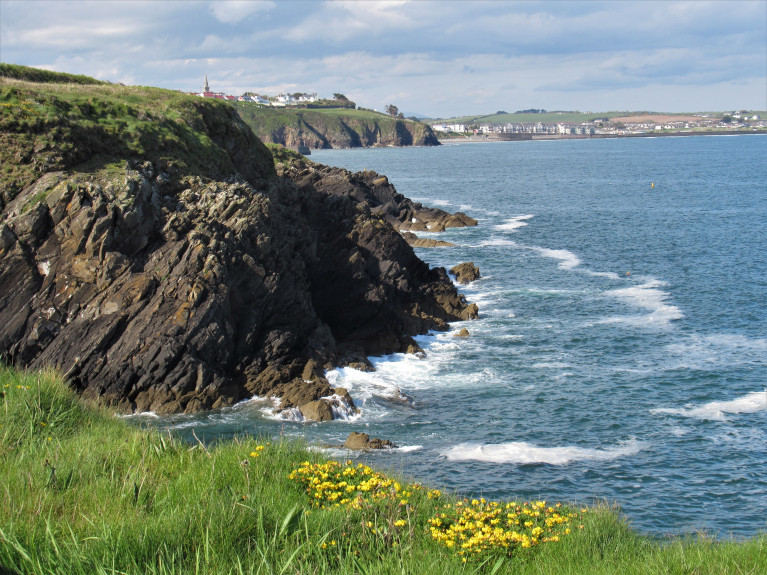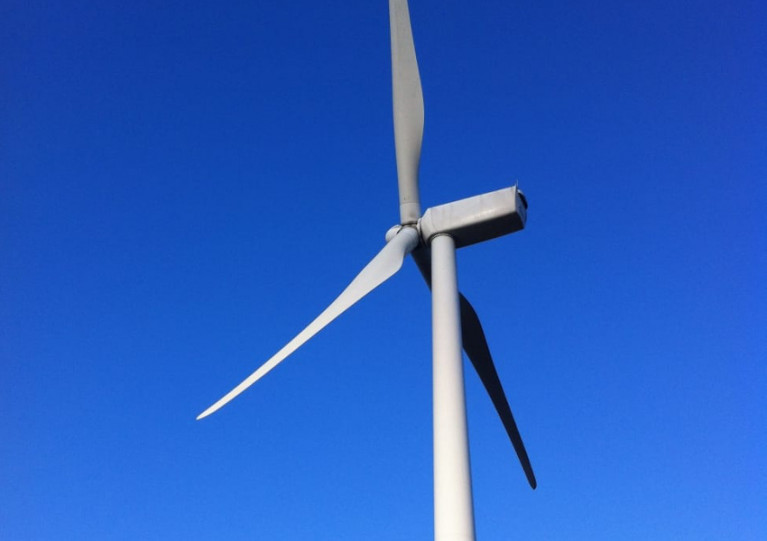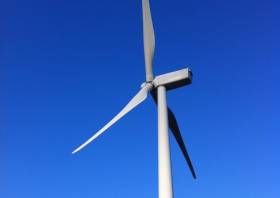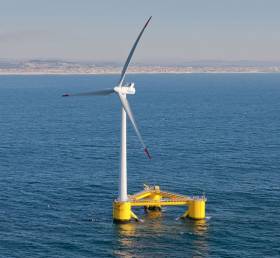Displaying items by tag: Wind Farms
Join the conversation on Ireland’s offshore wind challenges at a public information meeting at the Fitzpatrick Castle Hotel in Killiney this Tuesday 12 March at 7.30pm.
Hosted in association with Dalkey Community Council and Killiney Bay Community Council, ‘Windfarms & Wildlife: Protecting the Bay’s Habitats — Uncover the Realities, Explore the Concerns’ will hear from guest speakers Dr Michael O'Meara of the Blue Horizon citizens group and chartered environmental scientist Marie Louise Heffernan.
A nationally recognised expert in the Habitats Directive, Marie Louise Heffernan specialises in biodiversity planning in the coastal zone, has expertise in marine breeding birds and her overall interest is balancing sustainable development with environmental protection. Her presentation for Tuesday is titled ‘From Terns to Turbines: Sustaining Dublin Bay's Rich Ecology’.
Dr Michael O'Meara has a longstanding appreciation of nature and the sea, and holds the record for kayaking solo around Ireland since 2015. He brings this passion for nature and his knowledge of the sea and coastal environment to the Blue Horizon campaign which calls for a 22km turbine-free zone off the Waterford coast in order to protect marine biodiversity, the local fishing economy, seascapes and tourism interests.
Admission to this information event is free but space is limited and only a few tickets remain. Reserve your spot via Eventbrite HERE.
Mark Mellett, New Chair of MARA, on Government Plans for 2,500 Wind Turbines Off Irish Coasts
“We are in a race for survival…”
The words of Mark Mellett, chair of MARA, the State’s first marine planning regulatory authority, which has just opened for business in Wexford.
If Government targets on renewable energy offshore are met, there will be up to 2,500 wind turbines off the south, west and east coasts, Mellett, former head of the Defence Forces, said in an interview with Wavelengths.
While just five turbines would yield enough power to match Ardnacrusha’s hydroelectric output on the Shannon, more will be needed for creating sustainable aviation fuels and other requirements, Mellett says.
However, this will not be a “developer-led” industry, he said, as the Government is taking a “plan-led approach” to locations, he says, and he pledged commitment to citizen engagement.
He also said he believes there will be “biodiversity net gain” in between offshore wind farm locations.
 MARA is launched in Wexford - Darragh O'Brien T.D. Minister for Housing, Local Government and Heritage, Eamon Ryan TD, Minister for the Environment, Climate, Communications and Transport, Laura Brien Chief Executive of the Maritime Area Regulatory Authority (MARA) and Simon Coveney TD, Minister for Enterprise, Trade and Employment. Photograph: Patrick Browne
MARA is launched in Wexford - Darragh O'Brien T.D. Minister for Housing, Local Government and Heritage, Eamon Ryan TD, Minister for the Environment, Climate, Communications and Transport, Laura Brien Chief Executive of the Maritime Area Regulatory Authority (MARA) and Simon Coveney TD, Minister for Enterprise, Trade and Employment. Photograph: Patrick Browne
Headed by chief executive Laura Brien, MARA’s role will include assessing applications for maritime area consents (MACs), which are required before developers of offshore wind and other projects in the maritime area can make a planning application.
Here is the full interview below
'Serious concerns' have been raised by the Isle of Man Steam Packet in regards to the effect of growing windfarms in the Irish Sea.
As 3FM reports, the ferry operator has concerns following proposals for the windfarm of 'Morecambe and Morgan' which would be based in the Irish Sea.
The proposed windfarm would be in an area south-east of the Island along the route taken by the company's fast-ferry operating between Douglas and Liverpool. The 69 nautical mile route links the Manx capital to Merseyside where a new terminal is currently under construction.
Across the Island, leaflets have been posted asking for views expressed from the public. In addition a consultation process has been launched online which gives details of consultation venues and dates aswell as for pop-events noting an online event is scheduled for 10 November.
The Steam Packet posted on its website to say that it's 'supportive of sustainability and renewable energy' - and 'broadly speaking' the company supports initiatives to tackle energy challgenges.
More here on this renewable energy project story.
Dutch Safety Board Investigates "Increasing Congestion" Caused by Wind Farms and Shipping in North Sea
The Dutch Safety Board says it has initiated an investigation into the “increasing congestion” caused by wind farms and shipping in the North Sea.
The safety board, which investigates shipping, aviation, railway and industrial accidents in the Dutch State, said that “the construction of wind farms, among other things, and the increase in shipping with increasingly larger ships” means the North Sea is becoming busier.
It said it will “investigate the risks associated with the increasing use of the North Sea and what effect this may have on the safety of shipping in the area”.
The Dutch Safety Board said that the reason for this research was the drift of the Maltese bulk carrier Julietta D during Storm Corrie in late January 2022.
“ During the drift towards the Dutch coast, the bulk carrier first hit another ship and then two structures of a wind farm under construction,” it said.
The collision occurred after Julietta D’s anchor failed as Storm Corrie whipped up the North Sea. The second ship, Pechora Star, was reported stable and not taking on water, but Julietta D started sinking, and the crew of 18 was rescued by the Dutch Coast Guard.
The Dutch Safety Board said the Maltese investigative body, Transport Malta, is also investigating this incident and is focusing specifically on the collision.
Wind Farms Proposed on Irish Sea Could 'Massively' Affect Isle of Man Steam Packet Routes
According to Manx Radio, two huge wind farms proposed for the Irish Sea would have serious implications for ferry operator the Isle of Man Steam Packet Company.
Managing Director, Brian Thomson, says the Mona and Morgan wind farms would cut across the company's routes to both Heysham and Liverpool.
The contract to build the farms has been won by BP and a German firm as a 50-50 joint venture, and would generate sufficient electricity to power 3.4 million UK homes.
Mr Thomson says the Steam Packet and other operators in the Irish Sea are involved in consultations, but if the farms go ahead in the areas proposed, there would be consequences.
Click this link and scroll down page for a podcast from the ferry's M.D.
Also Manx Radio yesterday reported that Tynwald, the Manx parliament has approved an additional spend of £32.6m towards completion of the new Liverpool terminal, see previous story.
For further reading on this separate yet ferry related story, click here and again scroll down the page to listen to several podcasts.
A community group of stakeholders, Blue Horizon, is calling for all offshore wind projects to located at 22 km from the Waterford coast line.
According to Ocean Focus, this would follow the EU approach where the average ‘bottom fixed’ site is 59km from shore in an average water depth of 33 metres.
Blue Horizon says ‘yes’ to offshore wind but ‘no’ to nearshore wind, and is calling for a 22km wind turbine free zone of the Waterford coast in alignment with ‘EU best practices to protect biodiversity, the local fishing economy, the stunning seascapes and the tourism industry’.
The Waterford coast has several Special Areas of Conservation and Special Protection Areas under EU law, along with the Copper Coast UNESCO Geopark.
Some of the largest offshore wind farms ‘on the planet’ are planned for the Waterford coast, according to Blue Horizon.
These include: SSE Celtic Sea (25km); ESB Equinor, Helvick (10km); DP Energy, Inis Ealga (8.5km); Energia, Helvick Head (5km).
For more on the EU versus Waterford, click here.
Cork HarbourA floating offshore wind developer, Simply Blue Group, has appointed Captain Brian FitzGerald as Director of External Affairs and Stakeholder Liaison, Ireland.
Captain Fitzgerald will represent the company, focusing on the Emerald and Western Star portfolios, as exemplars in community engagement and trust building.
Having served at sea all around Ireland for much of his career, Capt. FitzGerald brings additional sea-borne perspectives to Simply Blue. His love of the sea, desire to protect Ireland’s maritime interests and his extensive career experience, make him an excellent fit for its external relations and stakeholder liaison role.
Capt. FitzGerald said: “Simply Blue offers the opportunity to address the challenge of climate change and energy security, by harnessing the abundance of offshore wind and wave resource that Ireland possesses. In meeting this vital challenge, I am delighted to be able to work with south and west coast communities and stakeholders as part of a collective effort to protect our future. It is through our values of responsibility, integrity, courage, diversity and passion that we will achieve that.
Val Cummins, Project MD of Simply Blue Energy Kinsale, said: “Floating offshore wind provides Ireland with the opportunity to address climate change and to develop a whole new economic sector. As a blue economy developer, we are deeply committed to meaningful community engagement. Brian’s experience and passion for the sustainable development of Ireland’s offshore wind resource bring further value and credibility to our Irish team”.
Capt. FitzGerald enjoyed a long and successful career with Ireland’s Naval Service including two periods as a ship’s Captain before ultimately serving as the Navy’s Operational Commander.
He also obtained specialist qualifications in Maritime Law, Mediation and Public Relations and to his wide-ranging naval qualifications. In addition to his ‘islander’s’ perspective and championing of the Cork Harbour region as Ireland’s Maritime Quarter is well known.
Earlier this year, Simply Blue Group announced a joint venture partnership with Shell. This will see the development of the Emerald floating wind farm off the Cork coast in the vicinity of the Kinsale gas field, which is currently being decommissioned.
Simply Blue is also developing the Western Star floating wind and wave project off West Clare.
Seven Offshore Renewable Energy Projects Approved For Transition To New Marine Planning Regime
Seven offshore renewable energy projects have been designated as ‘Relevant Projects’ by the Ministers for Urban Development and Climate Action and approved for transition to the upcoming new marine planing regime.
These are offshore wind projects that either applied for or were granted a lease under the Foreshore Act 1933, or offshore wind projects that are eligible to be processed to receive a valid grid connection offer.
The seven projects that have been approved include two by Innogy Renewables, at Bray and Kish Banks; two comprising the Codling Wind Park off Co Wicklow; Fuinneamh Sceirde Teoranta’s Skerd Rocks scheme off Connemara; and the North Irish Sea Array and Oriel Wind Farm, both off Co Louth.
The approval aims to further the objectives of the Climate Action Plan, which commits to increasing our offshore wind capacity to 3.5GW as part of our overall ambition to reach 70% renewable energy by 2030.
Urban Development Minister Damien English said: “I am pleased to announce a way forward for these offshore renewable energy projects which will now be determined under the planning regime to be introduced in the Marine Planning and Development Management Bill, 2020.
“Under this new marine planning regime, these projects will apply for final development consent to An Board Pleanála which will provide further opportunities for public consultation on the individual projects.”
Climate Action Minister Richard Bruton added: “This now sets out a clear development path for these offshore wind projects which will play a key role in decarbonising our electricity system.
“This is a clear example of the Government’s determination to deliver on our climate and renewable energy ambitions to deliver 70% of our electricity from renewable sources by 2030.”
The announcement means that these projects can continue to work and update a number of aspects to put them in a position to apply under the new marine planning regime, once enacted, which will be introduced by the Marine Planning and Development Management Bill 2020.
A €1.5 billion offshore wind farm stretching from Booterstown to Greystones could generate enough electricity to power 600,000 homes.
The Irish Times reports on proposals by an Irish-German partnership for the ‘Dublin Array’ offshore energy venture that could see as many as 100 wind turbines installed over 2,440 hectares, partly in Dublin Bay.
Saorgus and Innogy are now seeing a foreshore licence to conduct surveys in the intended locations of the Kish Bank and Bray Bank.
Pledges have been made to work with shipping companies, fishing interests, sailing clubs and other water users during this process, as the venture promises a “meaningful approach to supporting local communities”.
It is also hoped that the project would benefit from new Government supports guaranteeing revenue for renewable energy generators, a scheme which is currently under EU scrutiny.
The Irish Times has much more on the story HERE.
Likely objections about “visual impact” would hamper any attempts to develop offshore wind farms in Northern Ireland for the time being, according to a new Stormont report.
As BBC News reports, the paper from the Department for the Economy highlights “significant issues” with regard to expected objections to wind farm projects within 13km of the shore.
As well as “visual impact”, there are also concerns relating to protected habitats around Northern Ireland’s coastline.
Northern Ireland has been exclused from the Crown Estate’s latest leasing round for such schemes. It had been hoped that the coast from Carlingford Lough to Belfast Lough would be considered for leasing.
BBC News has more on the story HERE.


























